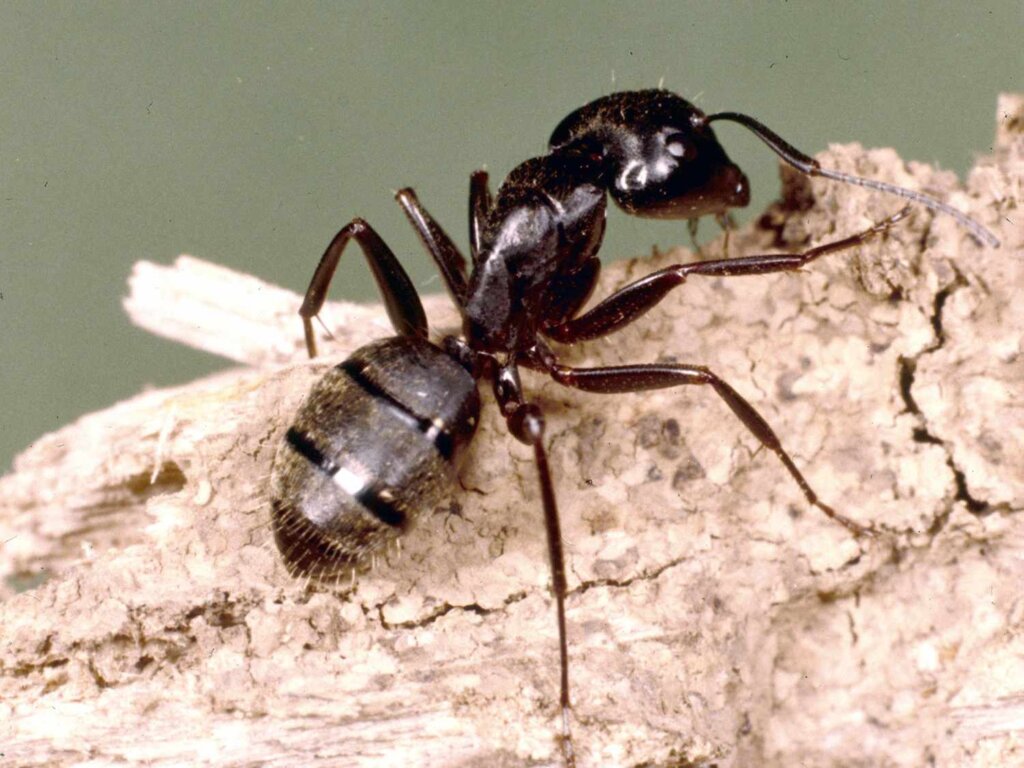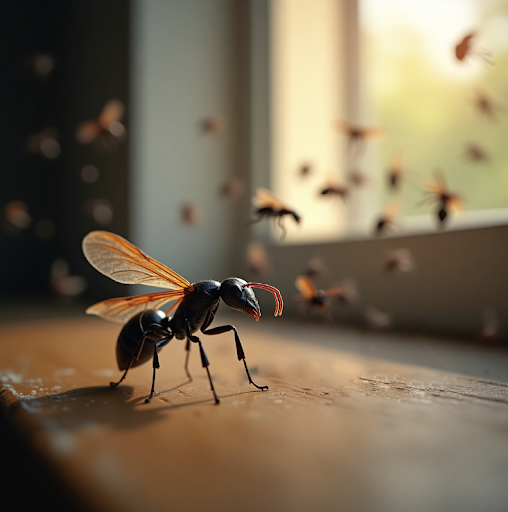Find out how carpenter ants survive the cold months and what winter activity could mean for your home.
We’ve all heard of the industrious nature of ants. We see their foraging paths and step on the little hills they make on the edge of the driveway. One of the most industrious kinds of ants is the carpenter ant, and as much as we might admire their efforts, these pests are certainly not a welcome sight in the house. Perhaps you’ve seen the damage that carpenter ants can do, or maybe you’re just worried for the safety of your home, but either way, it’s important to remember that cold weather does not necessarily mean a break from the battle to keep out pests. In fact, winter is an ideal time for carpenter ants to gain a foothold in your home.
First, it’s important to ensure that carpenter ants are truly what you’re dealing with. Many species of ants share the black and dark red coloring of carpenter ants, but not many in the Minnesota area will reach the size of carpenter ants, whose workers are normally 3/8″ to 5/8″ in length. House ants will look to find a convenient corner under storage or in a box, or find a spot inside your walls to call home, but carpenter ants will use the wood in your house to build their galleries (nests) in. Carpenter ants don’t actually eat wood, so an easy identifying mark would be the piles of shavings, or “frass,” that they leave near their kick-out holes.
So why worry about carpenter ants in the winter? Simply put, because you heat your house. Carpenter ants, like most pests, will go dormant in cold weather. This means retreating to the deepest parts of their galleries and waiting for warmer weather before foraging, laying more eggs, and expanding their colonies. If, however, there is a convenient place for the ants to forage in comfort, not to mention some nice stored food to bring back to the gallery, then the carpenter ants will keep their activities going straight through the winter.
How to Prevent Them Before Winter: Expert Tips and Year-Round Protection from Adam’s Pest Control
If you’re looking to put to put a stop to carpenter ants before the snow flies, there are some steps that you can take. The good news for those who don’t already have an infestation is that the first step to carpenter ant prevention is quite effective. The bad news for those with carpenter ants already in their house is that it is likely an indication of another problem. Carpenter ants don’t usually start a colony in dry wood, preferring to make their galleries in wood softened by dry rot or water damage. If you have carpenter ants, you will first want to inspect your house for moisture buildup and rotting wood, and if you don’t have them, prevention also begins here. Ensuring that leaks, condensation, or improper material usage are addressed will make your home much less appealing to carpenter ants. Also checking for cracks in the foundation, removing shrubs and branches that provide convenient access to your house, storing firewood away from the house and off the ground, and the proper sealing of piping and wiring entry points will discourage casual entry.
The last step, and the one that will give you your best chance of an ant-free home this winter is to call Adam’s Pest Control. Our pest management professionals will take all the previously mentioned factors into account, and add to them the experience collected from years of pest prevention and control, to provide you a service plan that will completely eliminate the carpenter ants looking to make your home theirs this winter. Not only that, but our Premier and Premier +Plus Home Pest Prevention plans look to the future, taking your property’s individual qualities and situation into account and providing coverage against a wide range of pests. Carpenter ants swarm and create satellite colonies connected to the main colony, and unless properly managed can be a recurring problem. Combat this with the recurring care that Adam’s Pest Control can offer throughout the year. As industrious as carpenter ants may be, Adam’s Pest Control can keep up in order to keep them out of your house.
Image of a Carpenter ants




